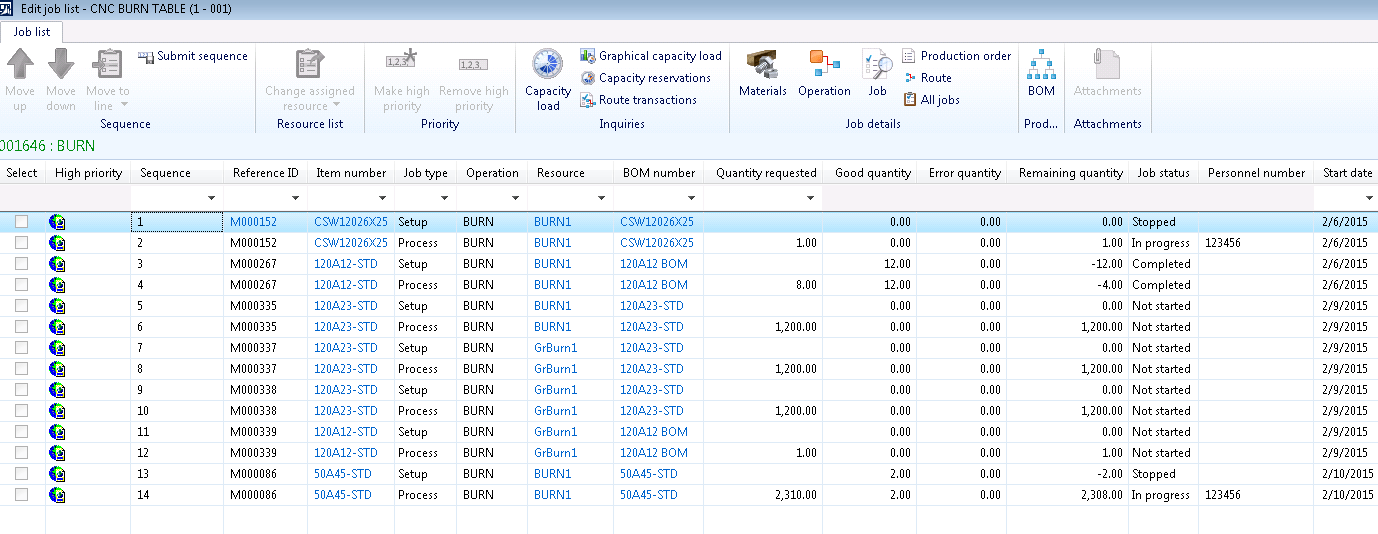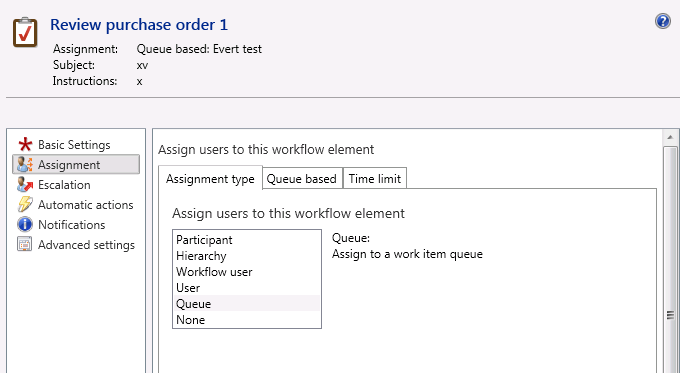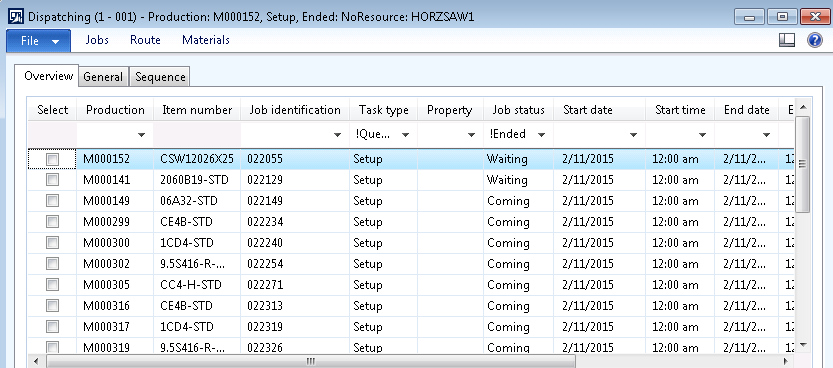This website uses cookies so that we can provide you with the best user experience possible. Cookie information is stored in your browser and performs functions such as recognising you when you return to our website and helping our team to understand which sections of the website you find most interesting and useful.
Microsoft Dynamics AX 2012 Operation Scheduling vs Job Scheduling

From the very beginning of Dynamics AX, two scheduling methods, operation scheduling and job scheduling, were available for Master Scheduling and in the Production module.
In every AX project the debate about which one to choose is unavoidable.
Most facts regarding the differences between these two scheduling methods are well known. I am adding lesser known details regarding sequencing/dispatching to this comparison list to provide more assistance in the decision making.
There is also an interesting change between 2009 and 2012 that has to be discussed and in fact triggered this blog. So let’s start mentioning the facts, from the most obvious to the less obvious.

This is the parameter that has values “Job” or “Route.”
As far as manufacturing execution goes, in AX 2012 we now have full freedom to choose which scheduling method to use. (NOTE: The 2009 “Dispatch list” is still available in 2012 but pales in comparison to “Edit Job List” )
Operation scheduling is possible on resource groups, but job scheduling will ALWAYS replace the resource group with a resource.
If Infinite capacity job scheduling is used, the system will always replace the resource group with the first resource in the list (alphabetically). With finite, the system will select resources in the group that have hours available. With infinite job scheduling, the system will NEVER spread out the hours evenly over the resources in a group. This is only possible with finite job scheduling.
Dispatching and sequencing
What is the role of these activities in the production order scenario and how do we do it in AX?
We can summarize the situation as follows:
For the weekly production schedule, MRP is not in charge. MRP has typically run with infinite capacity. For the weekly schedule somebody has to make decisions what to run first on each resource. Either a weekly finite scheduling run is used for this or the supervisor makes the decisions manually. This is called sequencing. The screen for this is “Edit job list”.
It starts with selecting a resource or a group. Then on that resource we can dispatch the jobs to the floor after sequencing them. See screen below.

When using finite capacity scheduling for a resource, the system will do the sequencing after the user has indicated a priority. Finite capacity really means’ finite resource loading” so the system will make decisions on which resource(s) to load the hours. The user can still make changes before sending the jobs to the floor, which means the jobs will appear in the registration screen in a the sequence that the supervisor has determined. “Submit sequence” is a mandatory step! It will make the jobs appear in the Registration screen in the same sequence as in the “Edit Job List”. With the “Edit Job List” the “dispatching” screen has lost its appeal.
See below how to get to the “Dispatching” screen. Find a resource first.
 The screen looks exactly like in AX 2009, see below.
The screen looks exactly like in AX 2009, see below.

The dispatch list, unchanged from 2009, but no longer relevant since 2012 has the “Edit Job List.”
Have any questions about operation scheduling in Dynamics AX 2012? Please reach out to our experts at any time!
This publication contains general information only and Sikich is not, by means of this publication, rendering accounting, business, financial, investment, legal, tax, or any other professional advice or services. This publication is not a substitute for such professional advice or services, nor should you use it as a basis for any decision, action or omission that may affect you or your business. Before making any decision, taking any action or omitting an action that may affect you or your business, you should consult a qualified professional advisor. In addition, this publication may contain certain content generated by an artificial intelligence (AI) language model. You acknowledge that Sikich shall not be responsible for any loss sustained by you or any person who relies on this publication.




